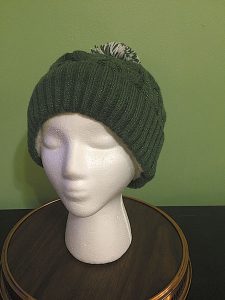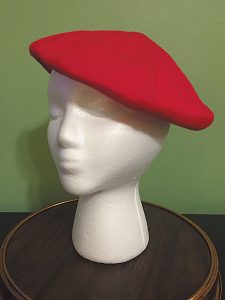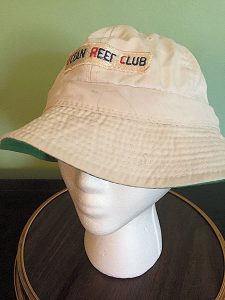October 1, 2019
PUBLISHER’S CORNER
 By Eloise Graham
By Eloise Graham
Hats, Caps and Head Coverings
 Now that the weather is getting cooler, it is time to think about those warm winter hats. According to some studies we lose 10 percent of our body heat through the top of our head if it is not covered. I have to admit I have no idea how one calculates that figure, but I do know when the temperature drops and the cold winds blow, a warm hat feels wonderful. Even a little beret will give some comfort. Or how about the thick stocking caps that you can pull down over your ears. As I was looking through my “stash” of hats, I started wondering about the history of the hat; it’s evolution, the many styles and functions.
Now that the weather is getting cooler, it is time to think about those warm winter hats. According to some studies we lose 10 percent of our body heat through the top of our head if it is not covered. I have to admit I have no idea how one calculates that figure, but I do know when the temperature drops and the cold winds blow, a warm hat feels wonderful. Even a little beret will give some comfort. Or how about the thick stocking caps that you can pull down over your ears. As I was looking through my “stash” of hats, I started wondering about the history of the hat; it’s evolution, the many styles and functions.
It is surmised that the origin of the hat was solely as protection. The first hat in human history was probably a big leaf or a piece of leather. But one of the first images of a person with a hat is a painting in Thebes tomb. There is painted a man with a simple conical straw hat. Humans knew that they needed some sort of covering to protect from sun or rain. That still seems to be a main function for today. The big-brimmed straw hats seem to be a must on the beach or out in the sun.
In the 19th century, ladies wore sunbonnets. These hats had a full back to cover head and hair and a big curved brim that encircled the face. The hats were tied down to secure them when the ladies were working in their gardens or traveling by covered wagon. A very functional hat, but could be adorned with ribbons, buttons, pleats, and ruffles to make a fashion statement. To protect from the rain, there is the dump hat or the rain slicker hat. The hat started as just one more protection from elements. It has stayed that way but at the same time, it developed into something more. As if it almost gained a character. Or better – thousands of characters.
 Hats can be a form of advertising. Many ball caps sport a brand or company. It’s as if a person’s head had become a walking billboard. Ball caps and knit hats are also a way of showing your pride in a team or a school or your place of business.
Hats can be a form of advertising. Many ball caps sport a brand or company. It’s as if a person’s head had become a walking billboard. Ball caps and knit hats are also a way of showing your pride in a team or a school or your place of business.
Hats are also whimsical and fun. Or maybe to make a fashion statement. In fashion, they are used as an accessory, accent or to pull an outfit together.
Some interesting facts that I learned about hats
In respect to top hats: The London black taxis are made taller to accommodate gentlemen wearing top hats. That way, the gentleman doesn’t need to remove his hat.
In the middle 19th Century, baseball umpires wore top hats. It is said that in 1797, John Hetherington wore one of the first top hats. It scared the other people on the streets so much that he was arrested, ended up in court and had to pay 50 pounds sterling.
White tall chefs hats traditionally have 100 pleats. It is said that this represents the one hundred ways an egg can be prepared. The hats were invented by cuisine inventors Marie-Antoine Carème and Auguste Escoffier as a way of establishing a hierarchy in the kitchen.
 English law, per Elizabeth I, dictates that anyone over the age of seven must wear a cap on Sundays and holidays.
English law, per Elizabeth I, dictates that anyone over the age of seven must wear a cap on Sundays and holidays.
The process of making felt included the use of mercury which is toxic. Prolonged exposure can cause damage in the nervous system, dementia and tremors. From that we get the term “mad as a hatter”.
Those who supply men’s hats are called hatters while those who supply women’s hats are called milliners.
Some weird but true state/local laws: In Wyoming, there is a law that prohibits wearing a hat that obstructs the view in a theater or some other place of amusement.
 In Fargo, North Dakota, there is a law that prohibits dancing while wearing a hat.
In Fargo, North Dakota, there is a law that prohibits dancing while wearing a hat.
There is still a law in Kentucky that prohibits a man from purchasing a ten-gallon hat unless his wife is there with him to assist in choosing the model.
The Panama hat is not from Panama. It is made in Ecuador.
Filed Under: History
Trackback URL: https://www.50pluslife.com/2019/10/01/publishers-corner-48/trackback/


